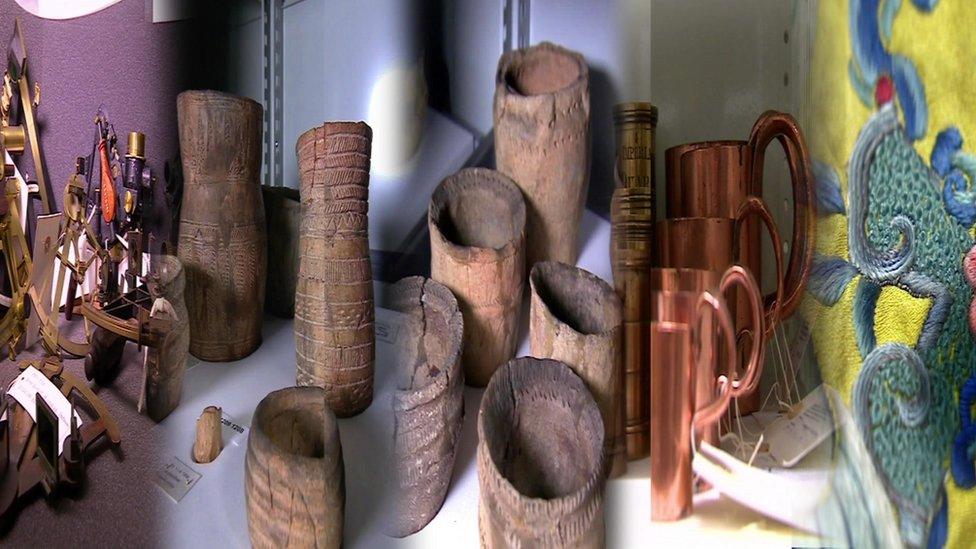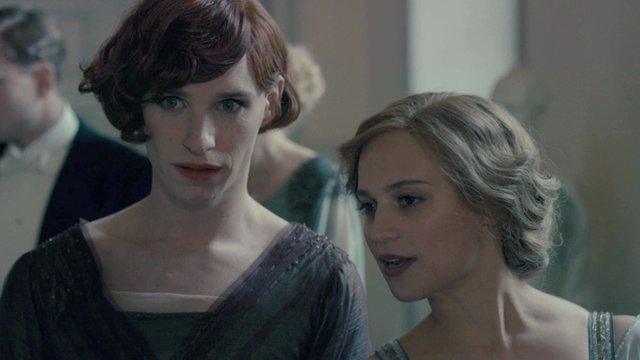Behind the scenes at the museum bank
- Published

Some of the treasures housed at Blythe House
When Blythe House was completed in 1903 it was considered a cutting-edge building.
It was electrified throughout with its own generators powering 11,000 lamps, printing machinery and both passenger and goods lifts. Less futuristic maybe, were the designated entrances for male and female staff who worked in separate wings to avoid any intimate or inappropriate encounters.
That's when it was the Post Office Saving Bank HQ. It's still a bank today - of sorts. Except the deposits its now safeguarding are not pounds and pence but ancient jewels and couture dresses.
The building is packed with treasures belonging to some of our major museums, which they don't currently require for display. Think of it as a massive subs bench for curators to call upon.
The Victoria & Albert Museum has a million items in the store, as does the British Museum - from Medieval Ethiopian wall hangings to 4000-year-old English pots.
The Science Museum's wing of Blythe House is brimming with telescopes, iron lungs and racks full of microscopes and barometers. All of which will have to find another home.
The government has decided to sell the building, which sits on five-and-a-half acres of prime real estate.
It is giving the three national museums £150m and seven years to move out and find a new home for their collections - preferably, it hopes, one that not only preserves this enormous body of human creativity, but also makes it more accessible to the public.
- Published9 December 2015
- Published2 December 2015
- Published27 November 2015

- Published18 November 2015
- Published18 November 2015
- Published16 November 2015
- Published11 November 2015
- Published4 November 2015
- Published30 October 2015
- Published14 July 2015
